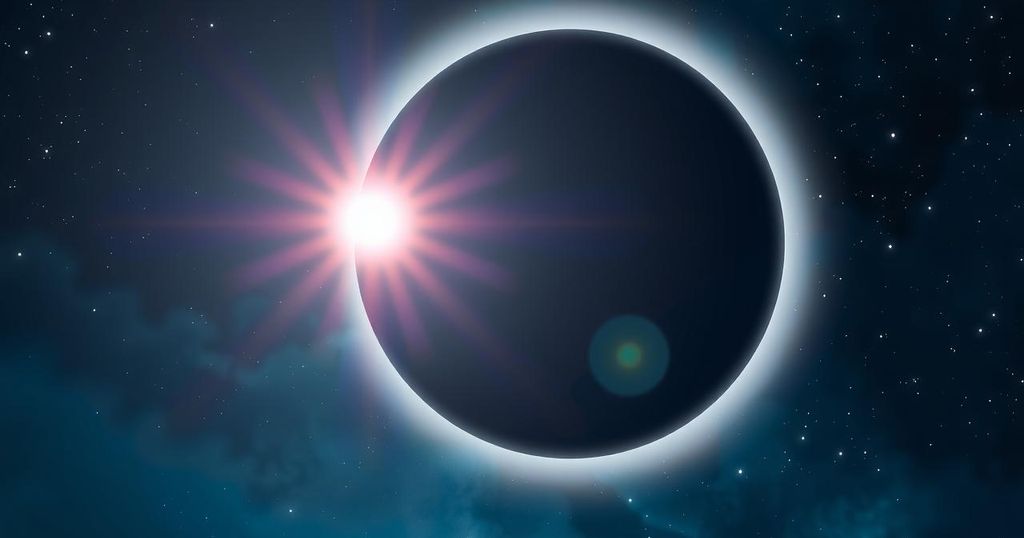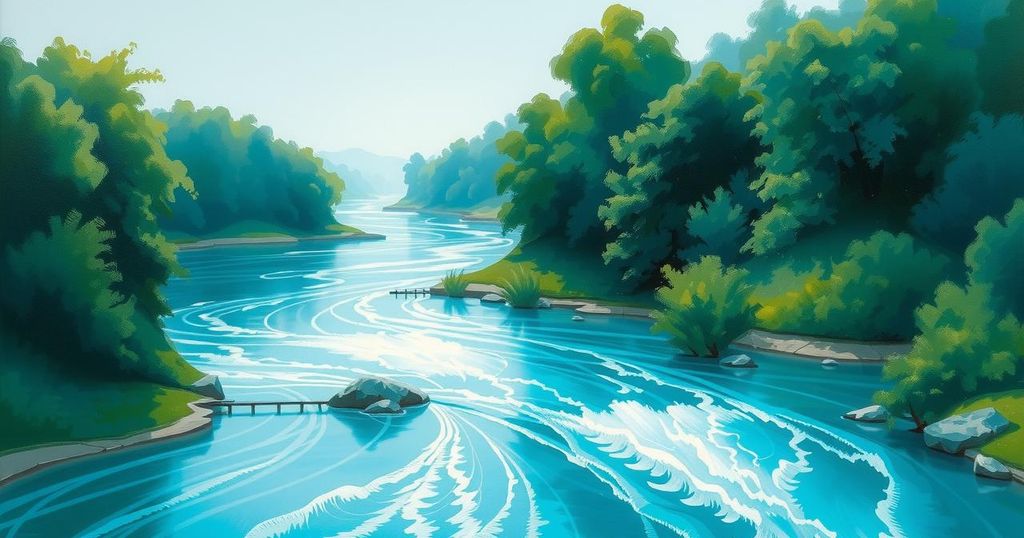A partial solar eclipse is occurring today, visible in parts of the northern hemisphere, including from eastern Canada to Siberia. The event, which marks the first eclipse of the year, will last approximately four hours. Observers are reminded to use proper eye protection to avoid damage from sunlight.
Today, a partial solar eclipse is occurring, where the moon will partially obscure the sun, visible from eastern Canada to Siberia. This eclipse marks the 17th of the 21st century and the first of the year, expected to last approximately four hours, commencing at 8:50 AM UTC and concluding at 12:43 PM UTC.
Florent Deleflie, an astronomer at the Paris-PSL Observatory, noted that residents of Mauritania and Morocco will witness the eclipse first, while those in northern Siberia will see it last. According to the Time and Space Laboratory at the Paris Observatory, Europe will also have visibility of the eclipse, with its peak occurring at 10:47 AM UTC over northeastern Canada and Greenland, where 90% of the sun’s disk will be covered.
The phenomenon is a result of the alignment of the sun, moon, and Earth. However, Deleflie explained that this alignment is not perfect enough to create a total eclipse. Consequently, the shadow cone of the moon will not reach the Earth’s surface at any point during this event.
In France, the eclipse will be observable from 10:00 AM to 12:00 PM UTC, with up to 30% of the sun being obscured depending on the region. While this may not be significantly noticeable, proper eye protection is critical. Solar viewing glasses are essential as they prevent eye damage that can result from powerful sunlight.
This partial solar eclipse follows closely after a total lunar eclipse that turned the moon red, which is a common occurrence halfway through its cycle. The most recent partial solar eclipse in mainland France occurred on October 25, 2022. A total solar eclipse is set for August 12, 2026, which will obscure 92% of the sun’s disk in Paris and 96% in Marseille.
In summary, today’s partial solar eclipse offers a celestial spectacle across parts of the northern hemisphere. While safe viewing precautions are necessary to prevent eye damage, the event represents the 17th eclipse of the 21st century and highlights the importance of astronomical alignments. Future eclipses, including a significant total solar eclipse in 2026, promise continued intrigue for astronomy enthusiasts.
Original Source: www.jordannews.jo




